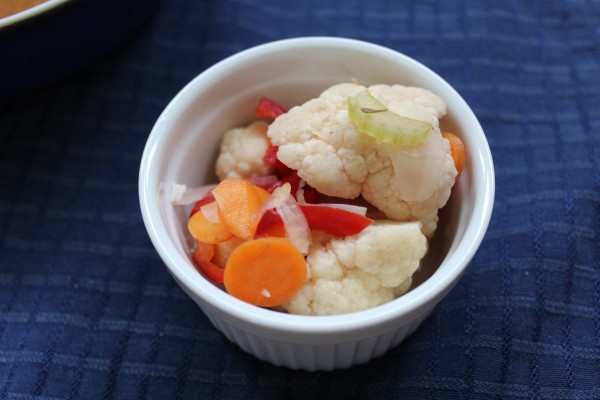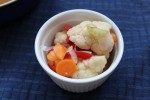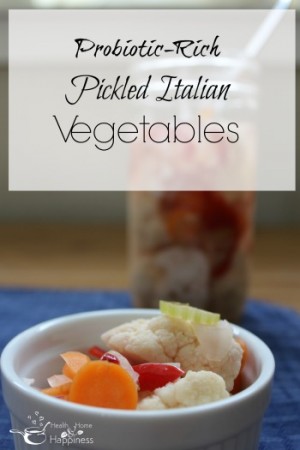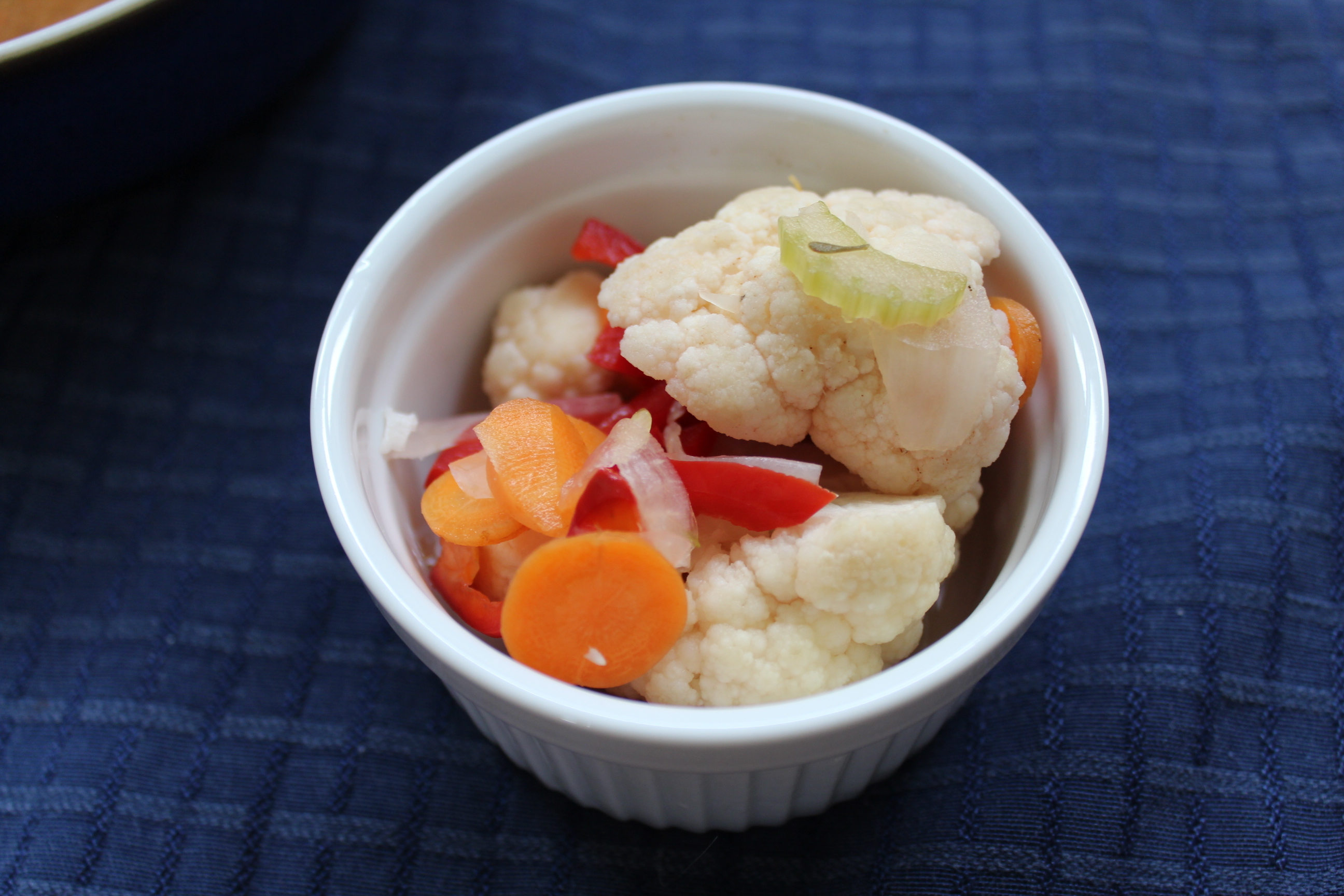
This recipe for Lactofermented Italian pickled vegetables is fast to put together. This recipe gives a nice splash of color, texture, and huge boost of probiotics to your favorite Italian meal. Lactofermented Italian pickled vegetables are a traditional food native to Italy, also known as Giardiniera.
Serve these cultured vegetables as a condiment alongside meat, or as part of an antipasta tray along with cheese and salami.
Benefits of Lactofermented Italian Pickled Vegetables
Typical pickled Italian vegetables found on the store shelves are pasturized. When you lacto-ferment at home, not only do you preserve your vegetables for months, but they will also will be rich in probiotics. Watch the video below to see the fermentation in action in the form of carbonation!
If culturing your own vegetables looks too easy to be true- check out this article where I explain exactly how lacto-fermentation works. You will learn how to know if you’re culturing the good, and not the bad bacteria. Culturing (fermenting) vegetables, fruit, dairy, and even meat is a health-giving and fun hobby.

Lactofermented Italian Pickled Vegetables (5 minute recipe)
Giardiniera, or Lacto-fermented Pickled Italian Vegetables, are fast to make at home. These pickled Italian vegetables are rich in probiotics, color, and flavor.
Ingredients
- 1 head cauliflower
- 1 red bell pepper
- 1 red white, or yellow onion
- 2 carrots
- 2 stalks celery
- 10 large garlic cloves
- 2 jalapeno or Serrano peppers
- 2 sprigs fresh thyme
Instructions
-
Rinse all produce.
-
Seed and coarsely chop peppers.
-
Peel and thinly slice onion.
-
Slice carrot and celery thinly, cut cauliflower into florets.
-
Fill quart mason jars to 1 inch below the rim with all vegetables, garlic, and thyme.
-
Add filtered water to cover vegetables. Top with 1 tablespoon unrefined sea salt.
-
Screw on Mason jar lids to finger-tight and allow to culture on the counter away from light for 5 days, burping daily as it cultures.
-
To burp, unscrew the lid and allow any pressure to escape. Do not completely remove the lid or you will risk introducing too many bad bacteria.
-
Transfer to the fridge.
This recipe is made as part of our Mediterranean cooking day in the Afternoon Freezer Cooking Class. Join us in the class for more fun recipes bursting with flavor and nutrition!

Other delicious and easy fermented foods:
- Perfect Lactofermented Dill Pickles (that work every time!)
- Sauerkraut: Just Cabbage and Salt (lactofermented recipe)
- How to Make 24-Hour Yogurt in the Dehydrator (easy directions for SCD and GAPS)
- Continuous Kombucha with Honey
Learn how to heal leaky gut

60-page ebook of all my best GAPS Diet (Gut and Psychology Syndrome) articles all in one place.



What food processor are you using? Mine always has hunks of vegetables spinning around, on top of the blade. It does not look like your food processor has that issue. I am definitely going to be making this recipe next week, after I hit the grocery store. I used to love Giardiniera, but have not eaten it in years, since starting on my clean eating journey. Thanks for posting the recipe.
Hi Nancy, I have this one :) http://amzn.to/2amg2AJ I really like it! Best wishes on your clean eating journey :)
Unfortunately, this recipe was not a hit for us. We do like garlic, but this was so overwhelming that nobody in the family will eat it. Also, way too spicy for all of us with digestive issues, even though I used only half of what the recipe calls for, just 1 jalapeno instead of 2, I actually made 2 of the jars with only 2 slices of jalapeno to make a less spicy version for my child, which worked out fine when I made quart sized jars of pickles last year, but even those 2 quarts that were supposed to be less spicy have too much heat (we must have been particularly unlucky in getting a very hot jalapeno). I had even removed the seeds for the jalapeno. I would try this again , but add the garlic at the end with a few slices per jar, and maybe omitting the jalapeno altogether. .
Thanks for the recipe and video! Why is it considered lacto-fermented when there are no lacto products in it? Doesn’t lacto refer to milk, such as whey? It appears you don’t even use a starter?
I’m excited to try this, and will rate it after I do. It looks wonderful!
Hi Vivian,
Glad you like it! The ‘lacto’ actually refers to the bacteria, not the lactose :) You can read more here if you’d like.